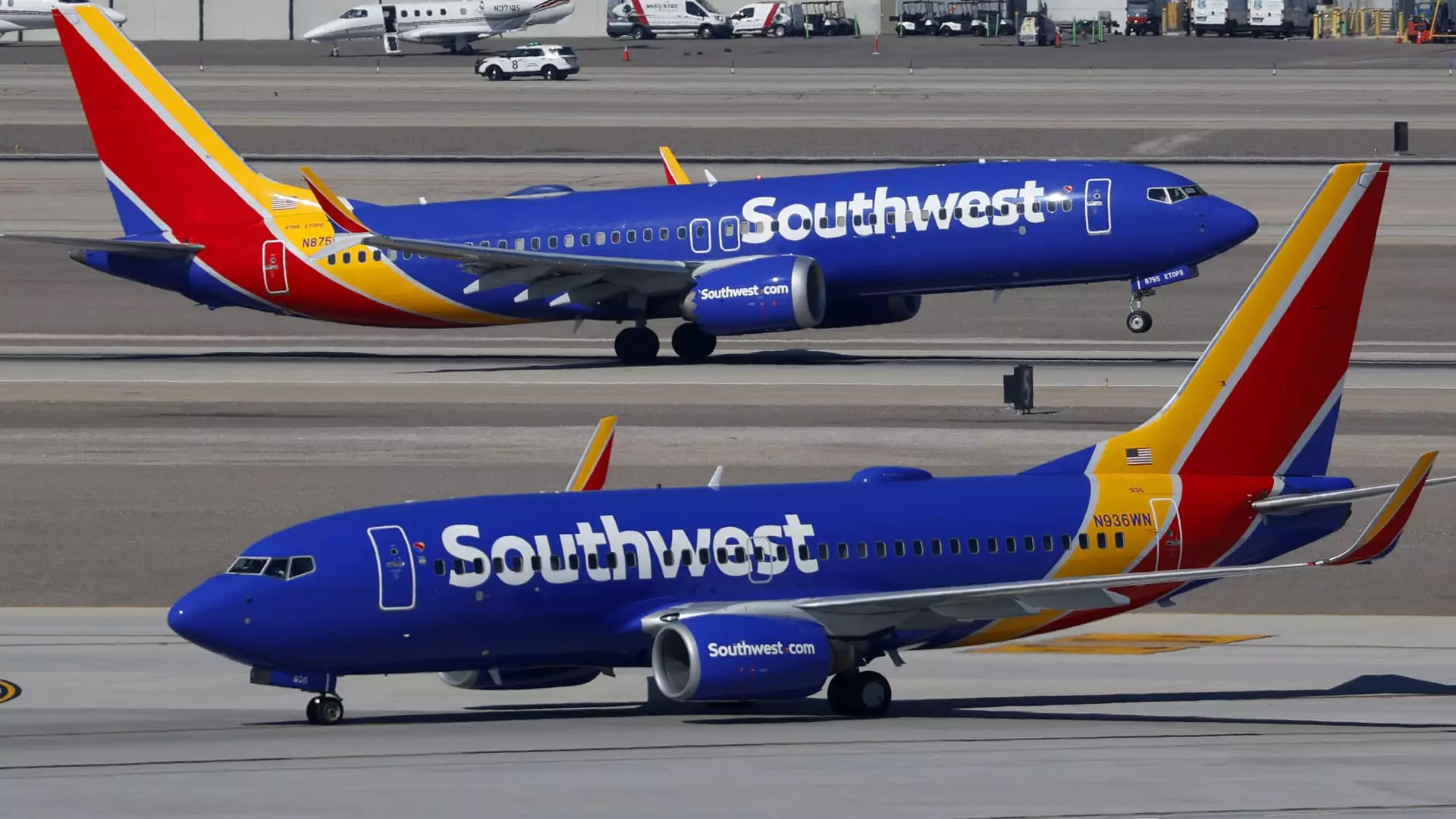Southwest Airlines, a noble pioneer of the budget-friendly, customer-centric flying experience, is making a perilous gamble by abolishing its beloved open seating policy. For over half a century, the airline’s open seating allowed passengers to choose their seats upon arrival, fostering a sense of empowerment and spontaneity. This policy has been more than just a logistical feature; it was a cornerstone of Southwest’s identity, symbolizing fairness, simplicity, and customer-friendly freedom. Now, this tradition is being sacrificed on the altar of profitability and operational efficiency. The airline’s decision to introduce assigned seating, starting January 27, marks a significant ideological shift — from a culture of trust and flexibility to a more controlled, revenue-driven model.
The decision subtly erodes the value proposition that Southwest uniquely offered, risking alienation of core customers who valued the communal and unhurried boarding process. It signals a stark acknowledgment that the airline is no longer solely driven by loyalty or customer-centric ideals but increasingly susceptible to competitive pressures that favor short-term gains over long-standing principles. By removing the chaos and camaraderie of open seating, Southwest might inadvertently dilute its brand identity, undermining the very differentiators that made it popular in the first place.
Revenue Over Loyalty: The Cost of New Fees and Structures
The move toward assigned seating and additional fees for checked bags reflects a broader strategic overhaul aimed at bolstering revenue. Southwest itself admits that these shifts are designed to generate an extra $800 million this year and a projected $1.7 billion by 2026. The airline’s leadership appears to believe that monetizing every aspect of the travel experience is essential to staying competitive amidst aggressive rivals who have long embraced ancillary revenues as a key profit source.
What’s particularly troubling about this transition is how it could fracture the loyalty that has historically been Southwest’s backbone. Top-tier, frequent flyer, and credit card customers are prioritized in boarding, yet these benefits do little to compensate for the loss of open seating that many loyal passengers cherished. The introduction of assigned seating, variable pricing, and seat choice fees risks creating a tiered system that favors those with higher spend and loyalty, thereby superficializing the once egalitarian boarding process.
This “revenue-first” approach blatantly undermines the cultural ethos of convenience and fairness. It creates a more transactional relationship with travelers, eroding those spontaneous, laid-back experiences that built emotional bonds with the brand. Whether this trade-off will effectively “pay off” remains to be seen, but it demonstrates a troubling deprioritization of customer loyalty at a time when consumer expectations are leaning toward transparency, fairness, and value.
Operational Efficiency at a Cost?
Southwest claims that these changes are meticulously designed so as not to impede operational flow, emphasizing efficiencies gained through pre-assigned seating and a new boarding process. However, this attempt to streamline might be a façade hiding the deeper problem: the loss of spontaneity and the human element that differentiates Southwest from its competitors. Moving from a group-based, community-oriented boarding to a structured, seat-selection model risks making the experience more sterile and impersonal.
The airline’s focus on implementing new boarding groups, seat tiers, and extra legroom options is a classic example of how the modern airline industry prioritizes ticket sales over the emotional and social aspects of flying. The cherished chaos of lining up, lining up with one’s neighbors, and the anticipation of securing a preferred seat are being replaced by curated seating preferences. This shift not only undermines the sense of fairness rooted in first-come, first-served boarding but also alienates the traveler who enjoyed spontaneous choices or valued the communal boarding chaos as part of the flying experience.
Furthermore, how will this impact families or groups traveling together? While Southwest claims seating options will still be available for purchase, the personalized, flexible experience that allowed families to sit together or travelers to choose seats on a whim is being diminished. The airline seems to be prioritizing efficiency and revenue over the nuanced needs of its diverse customer base, risking loss of loyalty among those who prize flexibility and simplicity over profit-maximizing features.
The Future of Southwest’s Brand Identity and Customer Trust
In its rush to modernize and monetize, Southwest risks losing the heart of its brand — the promise of affordable, uncomplicated travel with a human touch. Its former reputation for customer-first policies, such as two free checked bags and open seating, was a significant differentiator in a crowded market. Now, these features are being jeopardized by a shift toward ancillary revenue and tightly controlled boarding procedures.
This transition not only challenges the airline’s identity but also raises doubts about its long-term loyalty strategy. Will frequent flyers, who appreciated the airline’s transparency and egalitarian culture, feel betrayed? The answer is likely yes, and that dissatisfaction could have ripple effects on customer retention and brand perception. It’s a classic case of sacrificing core values at the altar of short-term financial gains, a move that many in the industry have come to regret.
Southwest’s pivot reflects a broader industry trend—one where traditional carriers are forced to retrofit their models to compete with ultra-efficient, profit-focused rivals. Still, it raises a fundamental question: at what point does the pursuit of profit threaten to diminish the very consumer trust and loyalty that once made Southwest stand out? Given the complexities of human preferences, the airline’s blunt focus on revenue might backfire by alienating the customer base that made it distinctive in the first place.


Leave a Reply